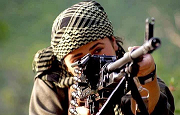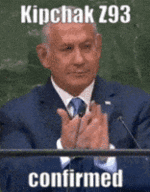0

















| Thumbs Up |
| Received: 35 Given: 0 |

That bit is all that is relevant here, first Sulaimania (Sulaymaniyah is what I think you are talking about) is not in the Altai mountain range, it is in the Western Zagros mountain range which is predominently populated by Kurds or Iranic people, the Turkic people in Zagros mountain range are further North east (Azeris culturally) and South east (Gashgai). Plus, I have never heard of a 'Altai' mountain range in Mesopotamia as this source claims.Very easy, read my post again:
http://www.theapricity.com/forum/sho...=1#post1434086
Do you understand now?
Here it is written in detail:
“Like Lullubaeans the Turukkaeans penetrated into Mesopotamian regions through the Zagros mountains to the north of Sulaimania and invaded the modern Turkish geographical tradition (cf. Turk. Alatau, Alatoo, Alataa, Altai, Aladag, Alageoz/Aragats).
So who do you think the Halafs were then?It has to do with, I cite,..."people inhabiting the Kurdish mountains". So, I don't think that a Kurdish people ever existed at this time period between 6000 BC - 5400 BC.
However, the earliest evidence associated to a distinct culture shaped by the inhabitants of the Kurdish mountains is traced during the period of the Halaf Culture (6000BC-5000 BC). Named after the site of Tell Halaf in northeast Syria (today's Syrian Kurdistan), the Halaf Culture was known for its exceptionally sophisticated pottery. Delicately painted and designed, Halaf pottery has been found from Iran to southeast Turkey and it is easily recognizable.
In regards to whether Halaf Culture is indeed the original homeland of the Kurds, archaeologists point out that shared pottery is an effective method to classify prehistoric cultures in the Middle East. By determining the boundaries of Halaf Culture, archaeologists are almost certain that they match with the geographical area that modern Kurds consider their homeland: from Afrin to Lake Van and from Kirmanshah to Adyaman. Besides, it is highly unlikely that the inhabitants of Halaf Culture were immigrants. According to historical and linguistic evidence, the Halafian population was the result of an internal migration that led to the cultural unification in Kurdistan.
The Halaf Culture was followed by the expansion of the Ubaidian Culture (5300BC-4000BC). The Ubaidians developed a mixed culture integrating the earlier influence of the Halaf Culture with their own culture heritage. Their relation to the Kurds is that they named the two main rivers of Kurdistan, Tigris and Euphrates and nearly all the cities that the contemporary world recognizes as Sumerian.
http://www.helium.com/items/1553752-...y-of-the-kurds
You be the judge, but it's very obvious to me.
The Sumerians never referred to themselves as Sumerians or their state as Sumer."Mesopotamia became occupied by the Ural-Altaic peoples before the seventh millennium B. C., and it was in the valley of the Euphrates and the Tigris that the Ural-Altaic civilization rose to its zenith. Here in the lower valley, a nation of city states, Sumer, developed. The Uralic or Finno-Ugrian name "Sumer" indicates a marshy region, just as was the original aspect of the country before it was traversed by a drainage canal system. The Erythrean Sea, (the Sea of Separation), or the modern Persian Gulf reached much higher up the valley at this period, so that the rivers Euphrates and the Tigris emptied to the gulf in separate outlets."
I am not aware of itAccording to newest research the pre-Sumerian homeland can be traced back to Himalaya and even further to South-East-Siberia.
I never said this, I said the Mitannis, who were a Hurrian people, spoke an Indo Aryan language which proves contact with Indo Aryan people.The Hurrians were not Indo-Aryan.
Only the last two are Medes. Those type of eyes are very common among Kurds, even I have them. And you can't really see their cheekbones. This is Turanid:Actually the individuals below have narrow eyes. Some of them even had typical high turanid cheekbones. The last one from the left even reminds me of a Kyrgyz by facial structure.
Whatever the case, I didn't speak about their racial characteristics, but rather cultural.
Turanid cheeckbones btw are very similar to (Eastern) Mediterranid cheekbones.
Now you talked about cultural, that proves my point even more:
Lets look at their language:
*čiθra-: "origin".[45] The word appears in *čiθrabṛzana- (med.) "exalting his linage", *čiθramiθra- (med.) "having mithraic origin", *čiθraspāta- (med.) "having a brilliant army", etc.[46]
Farnah: Divine glory; (Avestan: khvarənah)
Paridaiza: Paradise, (as in Pardis پردیس)
Spaka- : The word is Median and means "dog".[47] Herodotus identifies "Spaka-" (Gk. "σπάχα" - female dog) as Median rather than Persian.[48] The word is still used in modern Iranian languages including Talyshi.
vazṛka-: "great" (as Modern Persian bozorg)[44]
vispa-: "all".[49] (as in Avestan). The component appears in such words as vispafryā (Med. fem.) "dear to all", vispatarva- (med.) "vanquishing all", vispavada- (med. -op.) "leader of all", etc.[50]
Xshayathiya (royal, royalty): This Median word (∗xšaθra-pā-) is an example of words whose Greek form (known as romanized "satrap" from Gk. "satrápēs - σατράπης") mirrors, as opposed to the tradition[N 3], a Median rather than an Old Persian form of an Old Iranian word.[51]
zūra-: "evil" and zūrakara-: "evil-doer".[44]
All of them are of Iranian origin. Their language was classified as North Western Iranian, like Kurdish.
The language of the Medes is a northwestern branch of the Iranian languages. An Armenian manuscript of a Christian prayer from the 15th century C.E. contained the prayer in seven languages. One of these languages was known as the “Medean language.” This is in a Kurmanji Kurdish dialect and may be oldest known form of Kurdish.
http://suite101.com/article/who-were...persia-a198071
This is also something I have said many times to prove that they are also one of the ancestors of the Kurds:
The Magi tribe were the most dominant Median tribe and today their names survives in the Kurmanji people.
Kur - Son
Manji - Magi
It's simple, the moden day Kurmanjis, from North to south, are all the children of the Magi tribe.
Their religion was also Zoroastrianism and the followers were dominantly Iranic people. Zoroastrianism is still practised among many Kurds.
You never learn do you?Actually I think who insult to the motherland should be hanged high but anyway



















| Thumbs Up |
| Received: 5,410 Given: 6,858 |

It seems your English is not well. The author did not claimed that there is a 'Altai' mountain range in Mesopotamia. He simply said that the "Aratta/Alateie" country in the past has its etymological roots in the Altaic-Turkic geographical nomenclature, meaning "mountain".
Who were they?
I know, but what's your point here? It is wellknown that Sumerians called themselves "Kangar" or "Kenger". Its the same Turkic tribe we find a few thousand years later in the central asian steppes: the Kangars/Kangly.
I am not talking about contacts. I am talking about the ethnicity of a people. Is it ample to say that Hurrians WERE NOT Indo-Aryan? YES or NO?
собака/sopaka: Etymology
"Iranic spaka (Vasmer). In the mid-5th century BCE, Herodotus (Histories 1.110) wrote that spaka was the Median word for a female dog. Alternatively, it may come from Turkic köpek."
The only difference is that "spaka" means 'female dog', and "köpek" means 'male dog'.
http://translate.google.de/#en/tr/evil
zūra- from Turkish: "zararlı", meaning 'harmful, detrimental, deleterious, noxious, injurious, evil', from Arabic "ḍarar".
kara- from Turkish: -kar, or Azerbaijani: -xah.
It is just the Kurmanji dialect which shows substantially Turkic elements in language, be it grammar or vocabulary.
...
Whatever the case, there are a couple of evidence stating the main bulk of Medians as Turkic.
Last edited by Proto-Shaman; 03-21-2013 at 09:16 AM.



















| Thumbs Up |
| Received: 5,410 Given: 6,858 |

Anadolid (Synonyms: Anatolid), mostly Armenoid blend with Mediterranid
and some Turanid influence.
http://www.humanphenotypes.com/Anadolid.html"Description: Constitutes the prevalent type among the Turks in Turkey. Anadolids are usually finer-featured, more leptomorphic and somewhat longer-headed than Armenids proper. Even though Anadolid is a typcial type of the Turks, there exist several other phenotypes among them."
"Status: Core population in Turkey and adjacient regions.Found across many regions of the Middle East. Population is large and growing and has recently expanded to other parts of the world, especially central Europe."
---------------------------------------------------------------
West Turanid (Synonyms: Alfoeldi), collective term for the Western Turanid variants, living in Eastern Europe and Turkey.
http://www.humanphenotypes.com/WestTuranid.html"Description: This type is not very common, but still significant. The Turanid Hungarian population was described as the Alfoeldi type. Probably a result of the migrations of ancient Magyars, Huns, Tatars to Europe and Turkey. Greater amounts of European admixture distinguish West Turanids from Pamirds who are typcial for the Tajik population and the Aralids of Central Asia."
"Status: A significant element in Turkey, Hungary, Balkan and South Ukraine. The type is relatively rare in Europe and only found in significant concentrations in some areas of Anatolia. Population is stable."
_______________________
It seems Medians were of those Turanid racial types.
There are currently 1 users browsing this thread. (0 members and 1 guests)
 Türkiye
Türkiye
Bookmarks